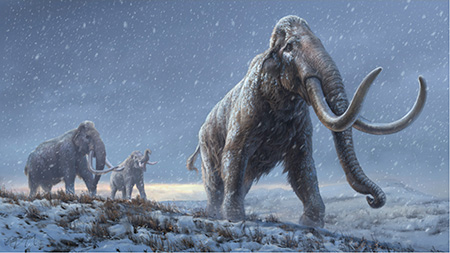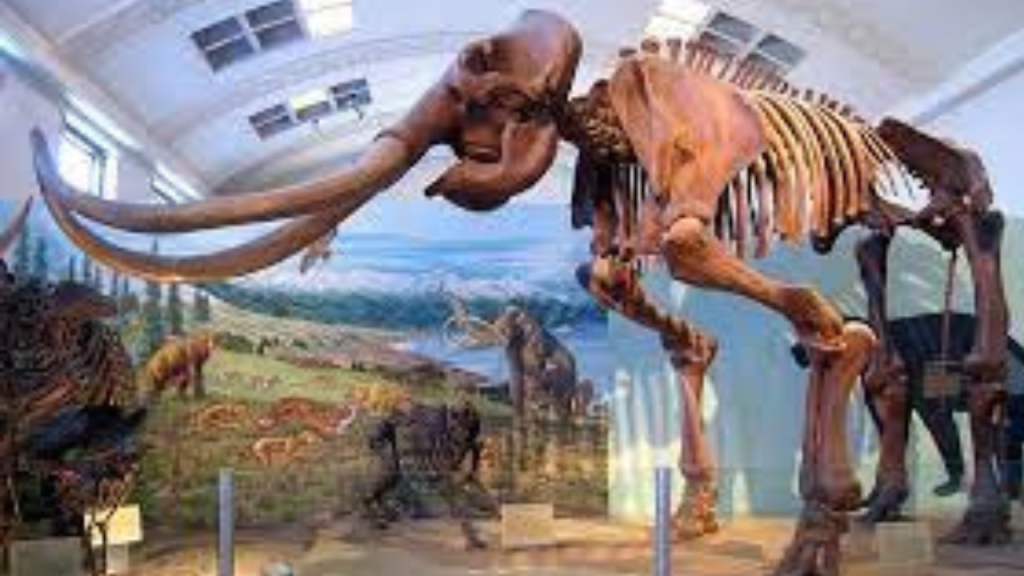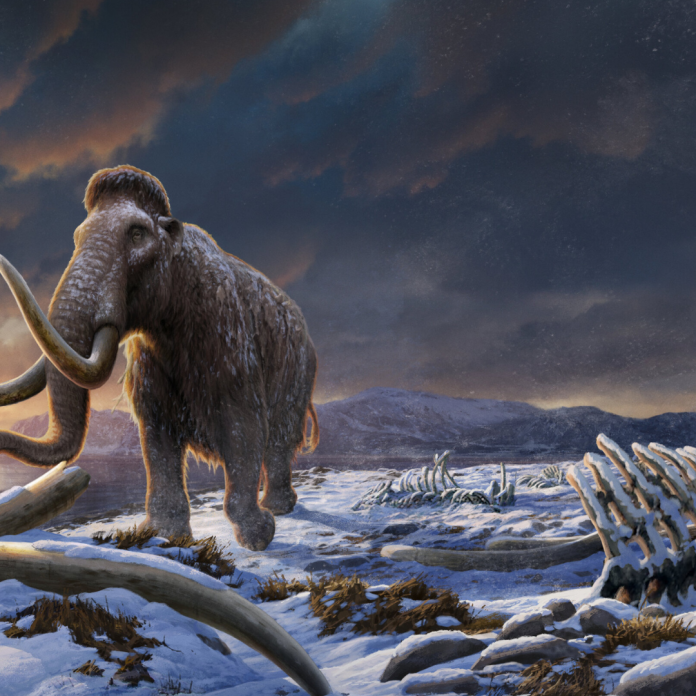Long after woolly mammoths vanished from mainland Eurasia and North America, a small, isolated group managed to survive on Wrangel Island—a remote 93-mile stretch of land off Siberia’s coast. These mammoths, the last of their kind, had arrived on the island around 10,000 years ago, clinging to life in a shrinking refuge. But even they couldn’t escape extinction. Around 4,000 years ago, the final woolly mammoths disappeared, marking the end of a species that had once roamed across much of the Northern Hemisphere.
The exact cause of their final extinction remains uncertain. However, new genetic research suggests that while inbreeding alone didn’t kill them, it likely made them more vulnerable to environmental stressors. The population had undergone a drastic reduction in size, and the accumulation of genetic mutations over time may have weakened their ability to adapt and survive.
In a recent study published in Cell, geneticist Patrícia Pečnerová of the University of Copenhagen, along with her team, explored the DNA of these last mammoths. Their findings provide a genetic narrative of a species in decline—a story that began long before the Wrangel Island population ever formed.
“The extinction of the Wrangel Island mammoths was the final step in a much longer process of decline,” says Pečnerová, who is also a National Geographic Explorer.
Was It Humans or Climate Change?

Woolly mammoths first evolved about 800,000 years ago and eventually spread from prehistoric Spain to the Great Lakes of North America. They thrived in cold, open grasslands known as the mammoth steppe—vast ecosystems that expanded during Ice Age glaciations. Unlike forest-dwelling mastodons, mammoths were grazers suited to the frigid plains.
But when the Ice Age ended about 11,700 years ago, glaciers retreated, and mammoth-friendly habitats began to shrink. Human hunting further pressured the species, and their slow reproductive rate made recovery difficult. Most mainland populations collapsed during this period.
“There’s still debate about the roles of climate change versus human hunting,” Pečnerová notes. “But the current consensus is that both played a part.”
Importantly, the extinction of the Wrangel Island population wasn’t a separate event but the last phase in a long decline triggered by changing climates and human activity.
The Final Survivors

The Wrangel Island mammoths represented a unique case of survival in isolation. Despite rising global temperatures and shrinking grasslands, these mammoths managed to persist in a remote haven. There’s no evidence that humans hunted them there—people didn’t arrive on the island until about 400 years after the last mammoths died.
To investigate what ultimately doomed this population, scientists analyzed DNA from mammoth bones and teeth. They sequenced 21 mammoth genomes from different time periods, comparing island mammoths to their mainland ancestors.
Previous research had hinted that extreme isolation on Wrangel Island caused a buildup of harmful mutations through inbreeding. This could have reduced the population’s ability to thrive or reproduce. But the new findings reveal a more complex story.
“It looks like the Wrangel Island population started with as few as eight breeding individuals,” Pečnerová says. “Yet it quickly grew to several hundred.”
This bottleneck, followed by expansion, left genetic traces. The mammoths remained genetically stable for thousands of years, purging some harmful mutations over time. They endured for about 200 generations before suddenly going extinct.
“I was surprised by how genetically stable the population seemed,” says Pečnerová. “Our previous assumptions were wrong. These mammoths didn’t die from a genetic meltdown.”
So What Did Kill Them?
Although their genomes showed signs of inbreeding, the final cause of extinction remains unclear. Humans weren’t responsible, and no single event has been identified. It’s possible that environmental changes, disease outbreaks, or food shortages played a role. However, these are difficult to trace in the fossil record.
Even though the population appeared stable, lingering genetic issues could have made the mammoths more susceptible to other threats. In such a small and isolated population, even minor stresses might have had outsized effects.
“Extinction is rarely caused by one factor alone,” says geneticist Rebekah Rogers of the University of North Carolina at Charlotte, who was not involved in the study. “Climate change, food availability, storms, disease—any or all of these could have played a role.”
The story of the last woolly mammoths is one of prolonged decline—an extinction not marked by catastrophe, but by gradual erosion. Climate change, habitat loss, human pressures, and a genetic bottleneck together sealed their fate. By the time they reached Wrangel Island, the mammoths may have been living on borrowed time, unable to adapt fast enough to a changing world.


